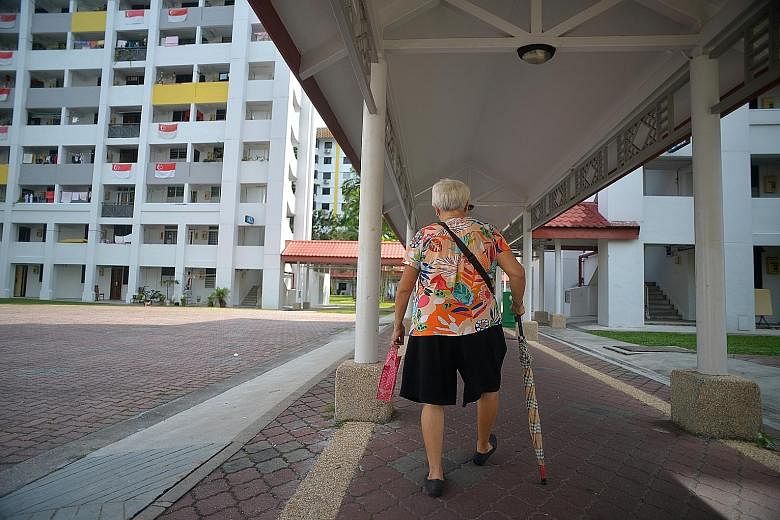Retiree households enjoyed the largest decline in consumer prices last year, compared with other income groups in Singapore, thanks in part to healthcare subsidies.
Consumer prices for retiree households - those with only non- working persons aged 60 years and above - fell by 2 per cent, said the Department of Statistics Singapore (Singstat) yesterday.
This was mainly due to lower accommodation and healthcare services costs, which make up a bigger share of their spending.
The fall in healthcare services costs reflected the various government subsidies, including those for Pioneer Generation members and support for Medishield Life premiums.
Consumer prices for general households slipped 0.5 per cent last year. Households in the bottom 20 per cent of incomes saw prices fall 1.1 per cent, while prices for middle-income households slid 0.3 per cent. The top 20 per cent of households by income enjoyed a 0.7 per cent fall in prices.
Overall, the consumer price index fell 0.7 per cent from January to October compared with the same period last year.
Lower oil prices and falling car prices and accommodation costs - partly due to the soft property market - have been the main drivers behind a two-year bout of negative inflation, said the Singstat study.
Excluding imputed rentals on owner-occupied accommodation, which do not involve actual cash expenditure for households which own their homes, the consumer price index for retiree households fell by 1.4 per cent last year - still the largest decline among all household types.
Last year's figures are in line with a broader trend in the past few years where retiree households have been more sheltered from inflation than other household groups.
The consumer price index for retiree households grew by an average of 1.9 per cent a year between 2009 and 2015. This inflation rate was slightly higher than that for households in the bottom 20 per cent of income group (1.8 per cent). But it was lower than that for general households (2.4 per cent), middle-income households (2.3 per cent) and the highest 20 per cent of households by income (2.6 per cent).
The top three expenditure categories for retiree households in 2014 were housing and utilities, food, and healthcare, which collectively accounted for more than 75 per cent of their total expenditure.
OCBC economist Selena Ling said the drop in consumer prices for retiree households shows government policies have helped alleviate some of their concerns, such as those related to healthcare.
But there will be rising costs in other areas that retirees will have to grapple with, along with the rest of the population, particularly food, she added, pointing to Singapore's "relatively elevated cost environment".
For retiree Helen Loh, 69, the government subsidies, including those for the Pioneer Generation, have helped to take a load off her mind in retirement.
"At our age, the healthcare costs can be quite heavy. But all the subsidies - they add up, and have helped a lot. Now we don't have to worry about old age," she told The Straits Times.


